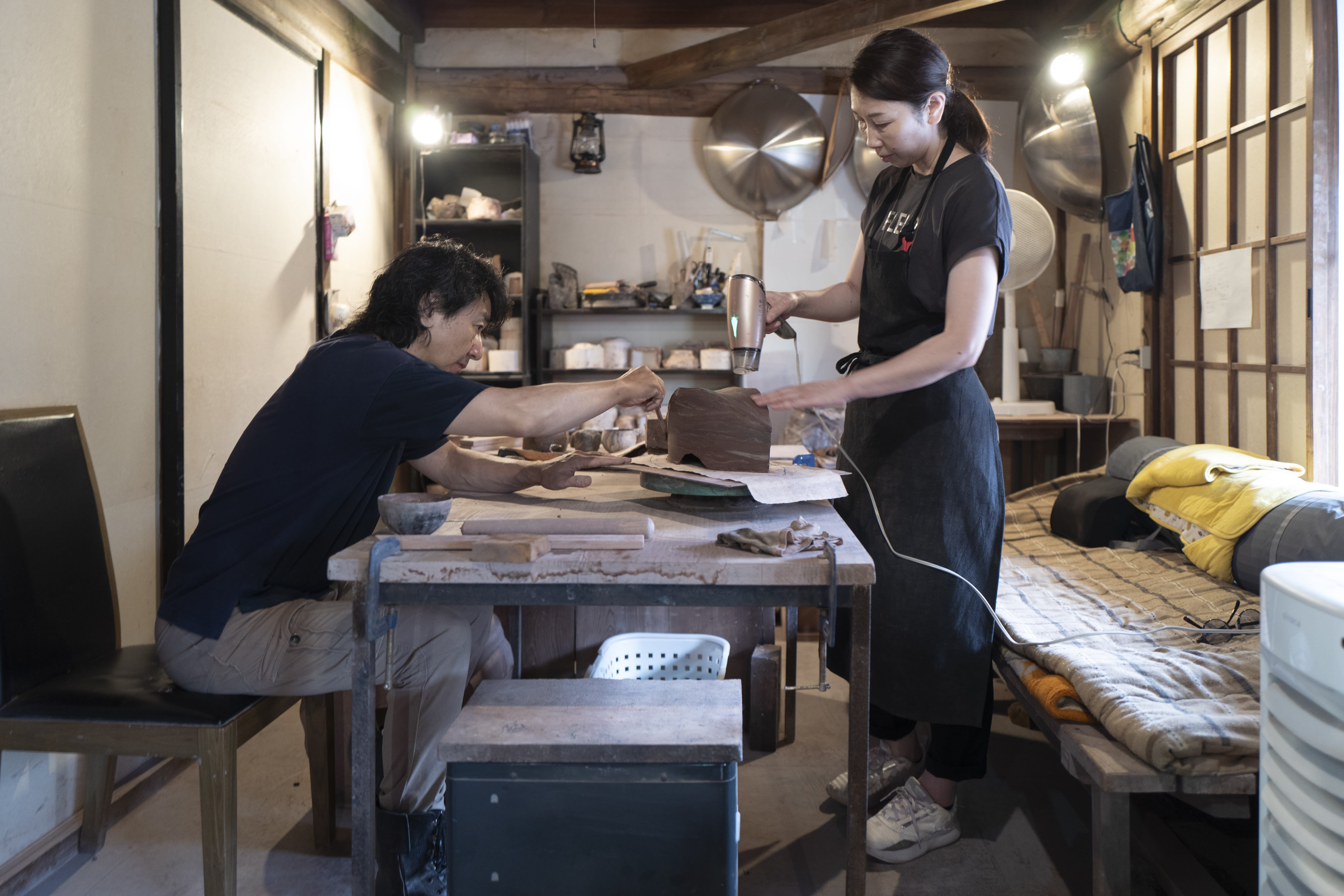
Yukiya Izumita is known for masterfully creating works with Sekisoh (layering.) Within them, one can sense the fragility of life as well as the strength of new beginnings.
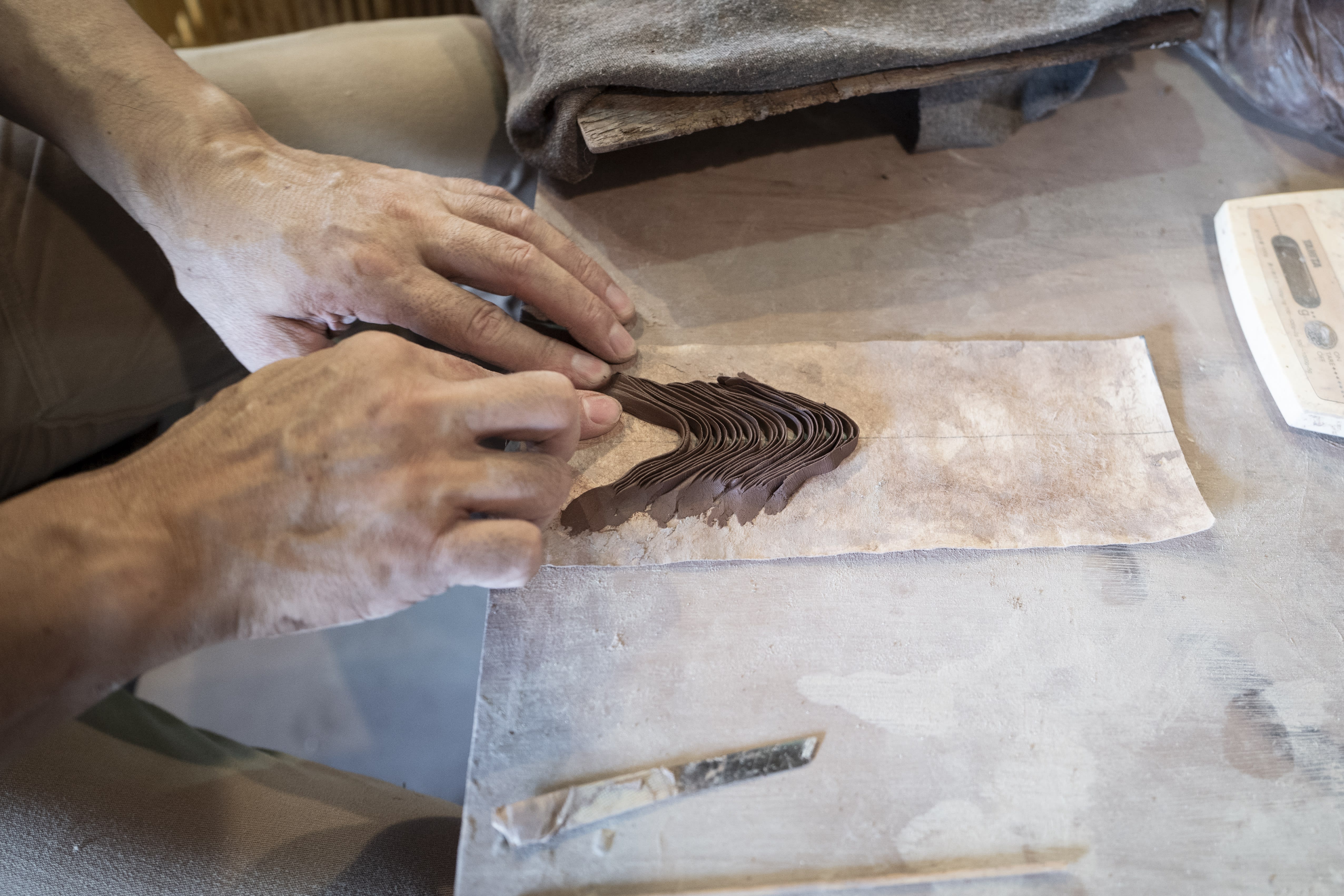
Both share the common goal of "creating something pleasant." In functional ceramics, utility is essential, requiring the work to be durable and usable. In my case, I incorporate expressions only after these requirements are met. I believe expressive ceramics allow complete freedom. Externally, freedom means that there are no rules; internally there is an expansiveness of mind and liberation from heaviness.
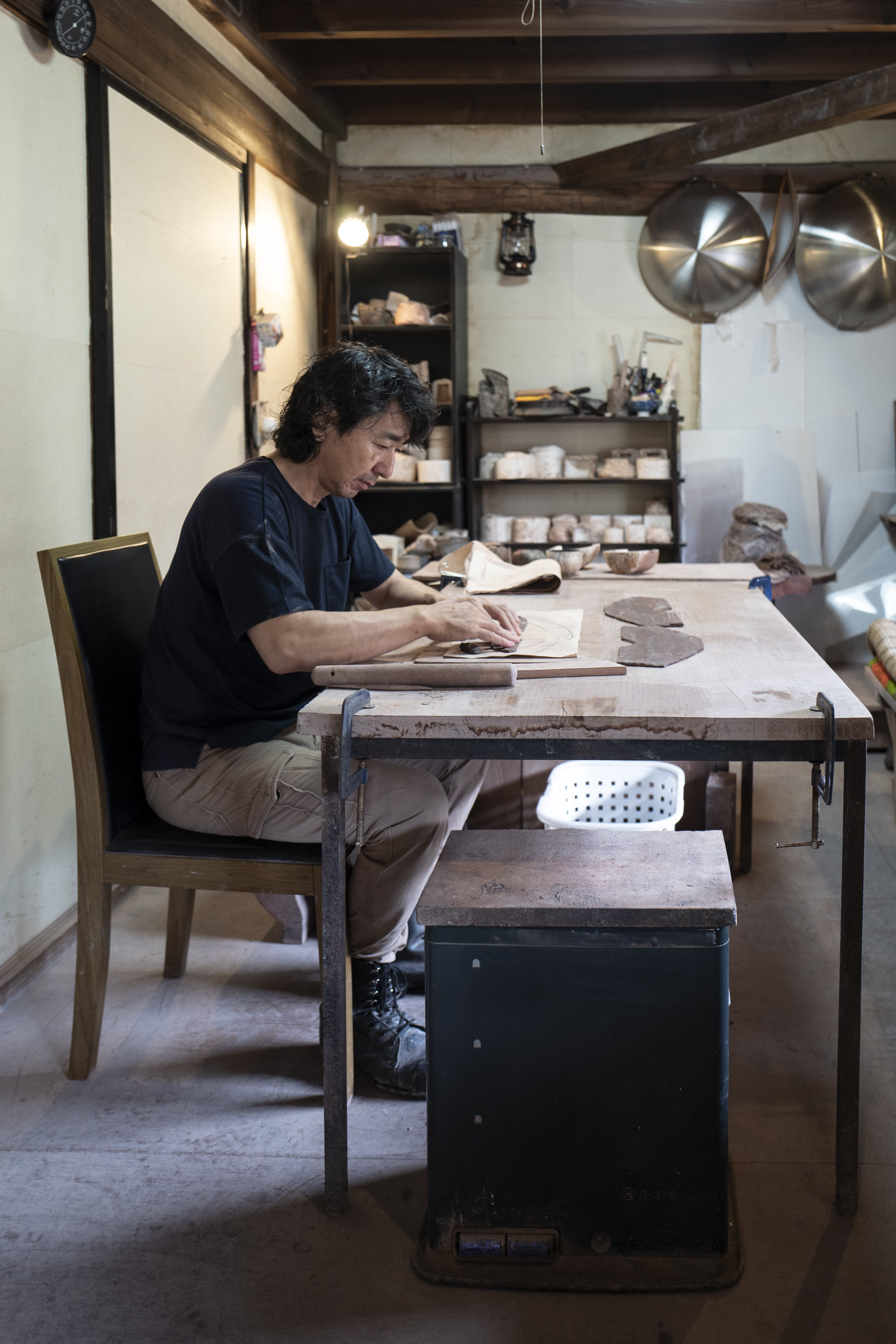
Q2:
You once said, "I feel eternity in things that are on the verge of collapse."
When I held your hand-pinched tea bowl, I felt a softness that seemed to physically accept my body. I sensed a gentleness, coolness, and purity on the verge of collapse in that sensation, which still remains in my hands. In reaching this state, were you influenced by Eastern philosophies or past artists?
Izumita:
Philosophically, it might be close to the Buddhist view of the universe. Basically, I try to work as much as possible using my current experience and knowledge. I don't readily adopt outside information or knowledge – I only incorporate it when absolutely necessary – because I don't want to reach conclusions without a genuine feeling from my experience.
My favorite artists include Shoji Kamoda, Peter Voulkos, and Marino Marini.
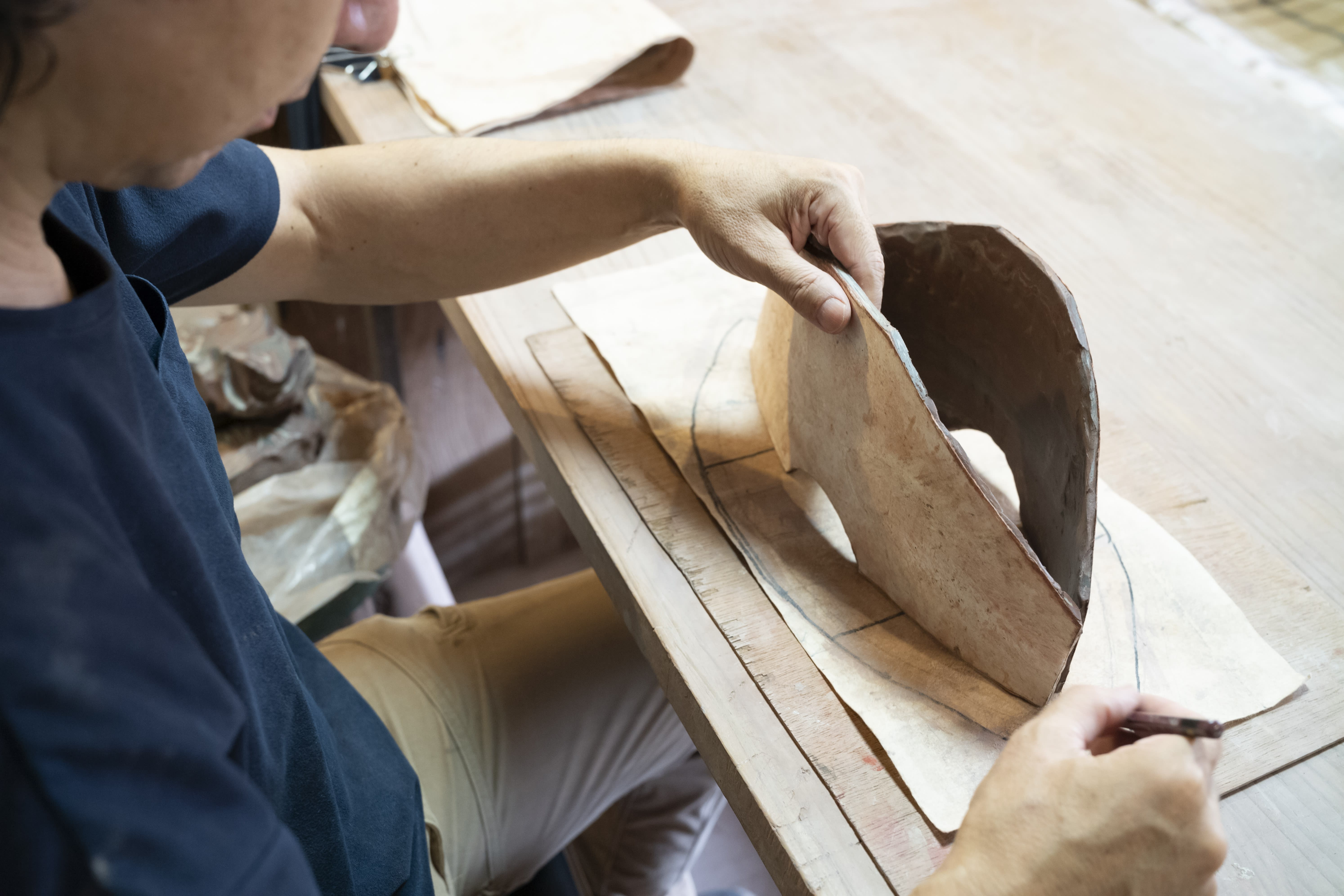
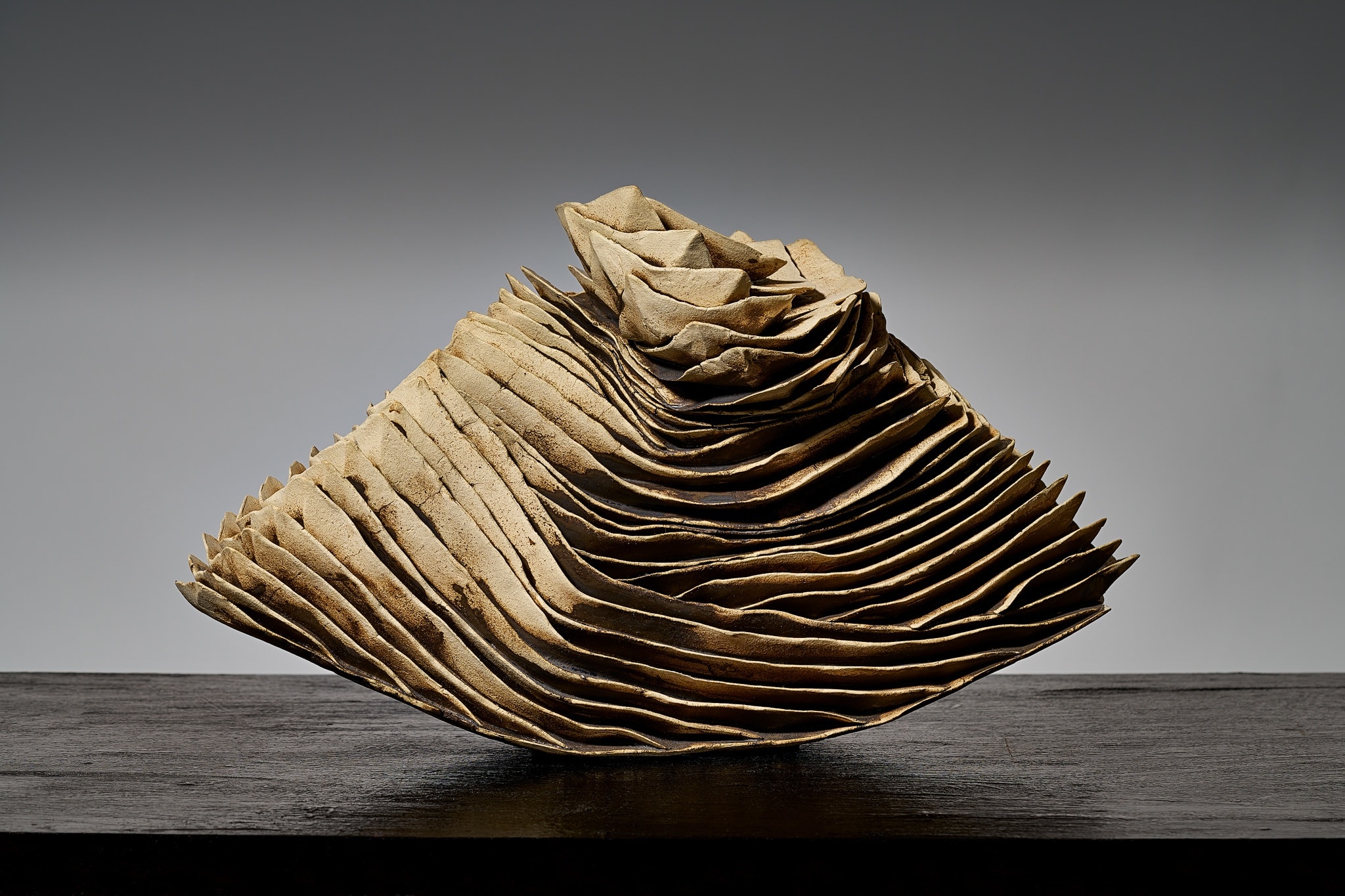
Yukiya Izumita, Sekisoh (C27815NP)
Q3:
This group exhibition focuses on Japanese gardens, which do not reflect the Western attitude of drawing clear boundaries between nature and the self, but, rather, place emphasis on becoming one with nature. I believe your works are born through processes that transcend human understanding, both in the clay material you use and the firing process. How do you interpret the concept of self when confronting clay as a natural material?
Izumita:
I see the self as a power of inner concentration and its expansion—an aspect of the mind. The stronger this power becomes, the more it reflects the direction of one's true self as a landscape. By confronting clay and nature, I believe we can find common rhythms and make these mental landscapes visible.
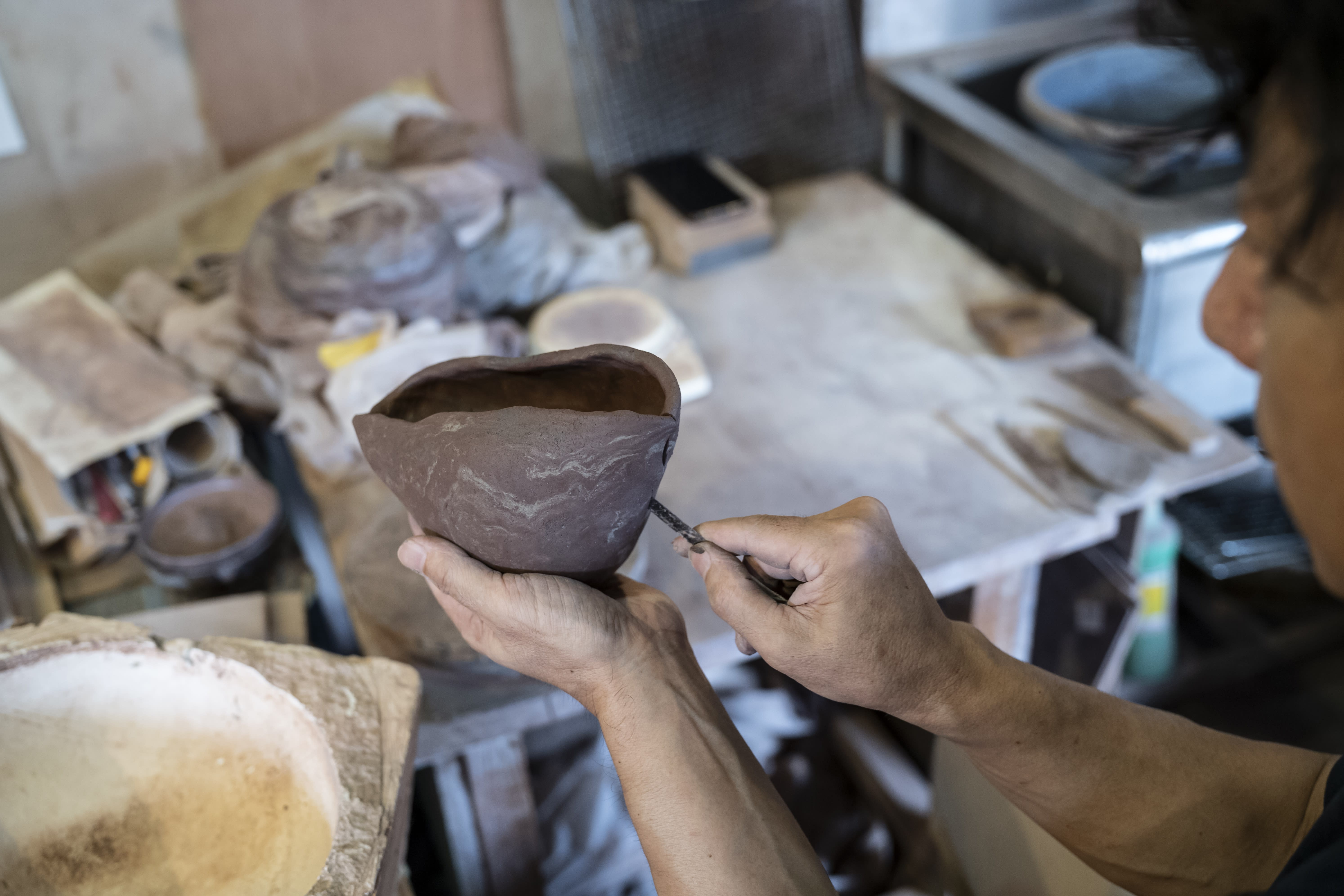
Q4:
In an interview, you mentioned, "Whether it's interesting or not. I focus solely on that point when creating." What excites you the most right now?
Izumita:
I get excited about creating expressions in works I've never made before. Currently, I'm enjoying exploring how to develop fine layering.
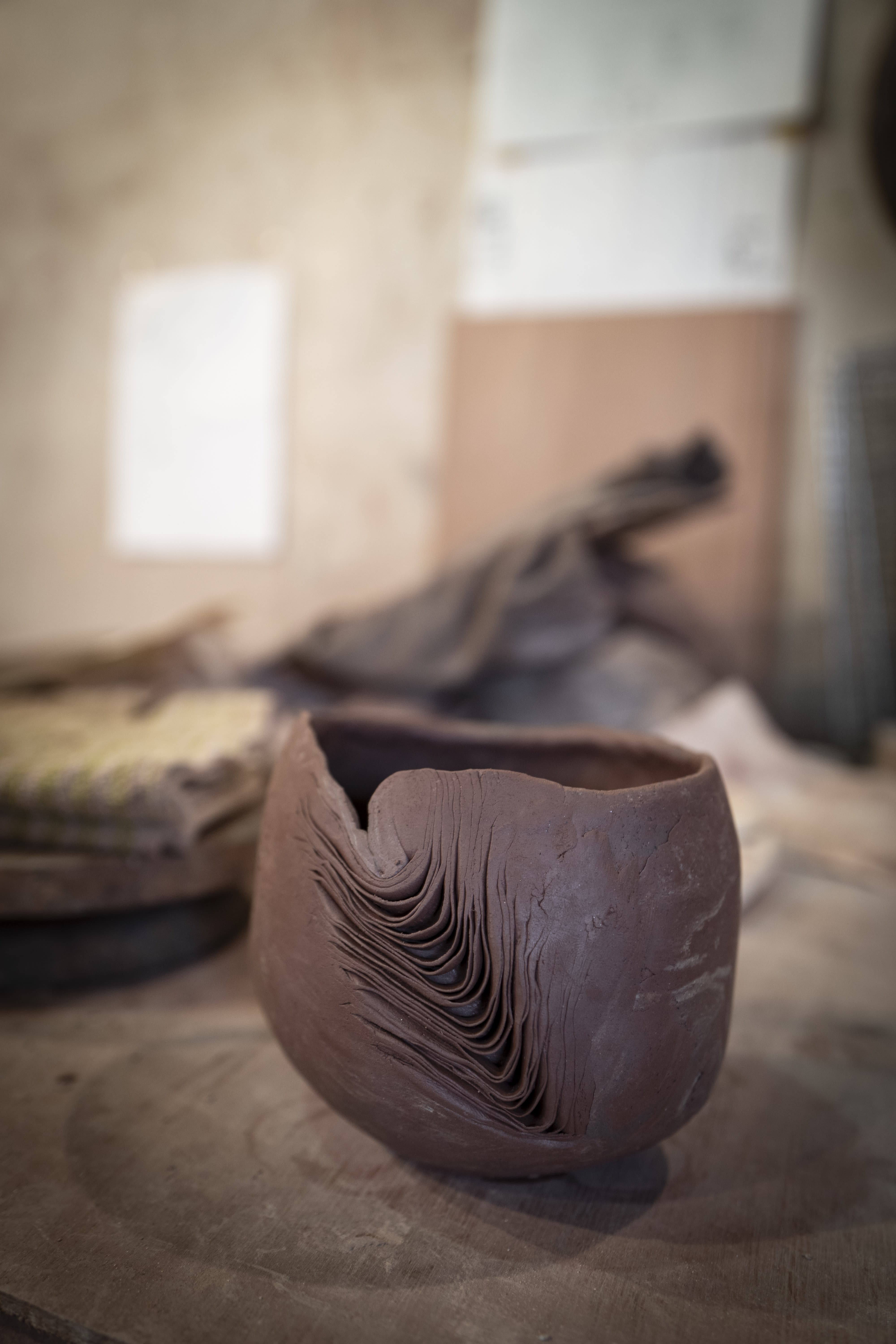
Q5: What is your next challenge?
Izumita:
I want to create wall-hanging works with a much greater sense of scale.

Yukiya Izumita, Sekisoh Tea Bowl (C29135NP)
